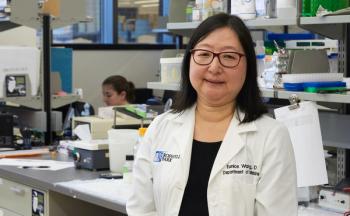
Dr Shantanu Agrawal: Bringing Together the Community to Tackle Social Determinants of Health
Bringing together community stakeholders and healthcare leaders can diminish health inequities, said Shantanu Agrawal, MD, MPhil, CEO and president of National Quality Forum.
Bringing together community stakeholders and healthcare leaders can diminish health inequities, said Shantanu Agrawal, MD, MPhil, CEO and president of National Quality Forum.
Transcript
Addressing social determinants of healthcan be a daunting task for a health system. Are there any recommendations for how to start delving into this area?
I think if the health system is really thinking of getting into this area, first and foremost, prioritize it and make that transparent within the health system. I think this is a conversation about values and priorities that health systems should be having that they need to have. I think once it’s clear that that’s a goal—and hopefully it is for everybody—then it’s really about reaching out to communities and thinking through the diversity of stakeholders that will be needed to address disparities of interest.
So, like most things in healthcare you can’t take a bull to the ocean approach you need to think of the 1, 2, or 3 areas of greatest need for your population. That may be food and security, it may be homelessness or housing insecurity. But, I think prioritizing upfront working with the relevant community stakeholders to what the focus areas will be is really critical. Then it’s harnessing all the available resources to actually make progress.
I think one of the both challenges but also building blocks of this kind of approach is a lot of our social programs are highly fragmented from each other. I think even the act of bringing communities leaders together with the healthcare leadership, pooling those resources that can have a really positive impact on itself. We’ve seen as we look across the country to communities and delivery systems that are doing this work we look we’ve seen just by making this a priority, by working with the community, by surfacing good ideas, and then pooling resources, we’ve literally seen that have a tremendous impact on patients. It is imminently doable, it just has to be a value that the communities and delivery systems focus on and want to see improvement on.
Newsletter
Stay ahead of policy, cost, and value—subscribe to AJMC for expert insights at the intersection of clinical care and health economics.







































